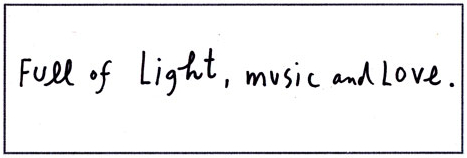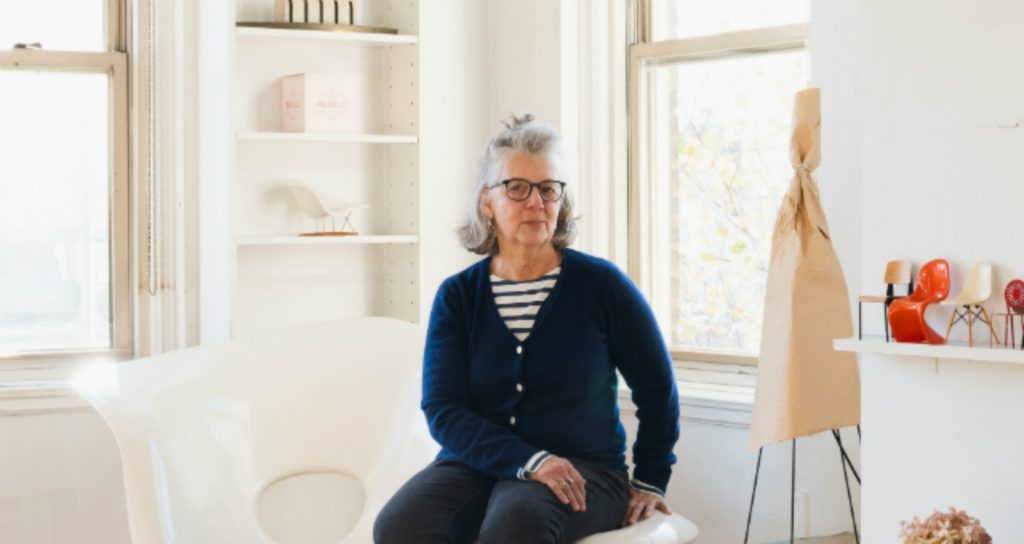What does living mean to you? #4
An Interview With Artist and Author Maira Kalman
What does the word "living" say to you? This series seeks the answer from creative individuals the world over. A place of thought, a space to relax in, an extension of the workplace, or simply a spot where you're surrounded by the people and things you love... Each has their own idea. This time around we put the question to the very popular New York artist and author Maira Kalman.
Foremost artist and author Maira Kalman lives in New York’s Greenwich Village, the forward-looking and culturally rich neighborhood that has, from a far earlier era, drawn scores of artists, writers and other creative types to its community.
A gentleman of elegant manner and attire welcomes visitors to her building’s lobby.
“Whoa, an elevator, and… WHOA, a bathroom!” Maira quotes herself with a wry smile, offering the fond memory of what she exclaimed when she first moved here in 1982 with her late husband Tibor Kalman, the celebrated designer, editor, and thinker, after having dreamed and created together in a small, nearby fifth-floor walk-up with a concrete bathtub in the kitchen. He and Maira, who was, among other things, writing poetry then, turned a new page in their creative life here in this 12th-floor apartment, where wide windows open to an azure sky.
He and Maira, who was, among other things, writing poetry then, turned a new page in their creative life here in this 12th-floor apartment, where wide windows open to an azure sky.
A daughter came along, followed by a son, and this room became a wellspring of delight — workplace, bedroom, a locus subdivided by string (to keep the kids contained); the chaotic, happy hearth of the home, where one could upend the furniture and do anything one thought of.
As the children grew, so did their residence. They bought the apartment next door, knocked down walls and made the two as one, allowing for new bedrooms and an extensive library. Today Maira keeps a workplace on another floor, and the living room is, once more, truer to its designation.
She’d always regarded the kitchen as being central to life’s activities, the place where “someone’s cooking, someone’s eating, someone’s reading, and someone’s writing…”. “Having said that,” she continues, eyes shining, “this room was kind of our laboratory of playfulness and experimentation.”
She’d always regarded the kitchen as being central to life’s activities […]
Her living room is deceptively simple. Tables, chairs, an abundance of sunlight, and white walls that speak to her of clarity. Then there’s the art and the objects. A mantel topped with items she’s collected on her travels. A famed chair from Vitra, a photograph by William Klein. On the opposite white wall, a railing that she mounted herself, with a revolving array of precious photos: her mother and other family, her old home in Tel Aviv.
“We wanted it to be a place where everything was changing all the time, and if you got tired of something, you just took it away.” There are tiny dolls made by nuns in Mexico in the thirties (“I think the nuns had a really good fashion sense.”), a lamp made from a small loaf of bread, sweet, small stools from Africa that serve as side tables. It’s the same lovely and loving aesthetic, the same affection for anonymous objects, the same intelligence and refined sense that flows consistently through her paintings and her words.
For every moment, happy and not so, this room has been watching warmly over the artist for nearly 40 years. When Tibor fell ill, on the advice of others her dog Pete came into her life. Pete appeared in her work at first casually, and then, scarcely thinking about it, she made him the center of a series of worldwide best-sellers. Then, too soon, Pete was called away.
Children grew up and took on their independent lives; and her mother Sara, the family’s guiding and beloved light, departed in a manner she’s spoken of as a “good death” on a trip together to their hometown of Tel Aviv.
In the way of life itself, the people, the pets, the objects of affection and art have grown and changed within this beautiful, living room of Maira’s. “I love to sit here at dusk and watch the shadows as the sunlight plays through the leaves of the trees of the residents below. There’s a lot of peace in this room, and a lot of inspiration.”
Always busy with new work and exhibitions of old, it’s the time she spends here with her children and two granddaughters that she cherishes most in this moment.
Q: What makes for a “living room” to you?
A: Full of light, music and love

“It’s full of light and music. Aside from the people, architecture and music are the most powerful things that inform a person’s life. The rooms you are in, and the music you listen to. There’s always music in this room, and always the upright piano that I play. Once, for my son Alex’s birthday, his then-fiancé, now wife, brought a cellist in to perform Bach!”
About Maira Kalman

Artist /illustrator/writer. Born in Israel, 1949. Moved with her family to New York City at five. She and husband Tibor established the studio M&Co, from which emerged many well-known and well-loved items including the famous “Sky Umbrella” and other brilliant, fun designs. The studio was also responsible for the look and feel of Benetton’s “COLORS” publications. She’s published 30 books to date, including “Taisetsu na Kimi”, the Japanese version of her “Beloved Dog”.
This article originally appeared in Hills Life published by MORI LIVING. Text by Mika Yoshida and David G. Imber, photo by Nicholas Calcott, edit by Kazumi Yamamoto.












Leave a Reply